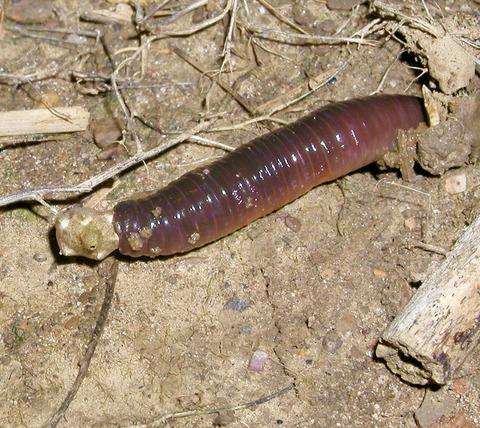当前位置:
X-MOL 学术
›
J. Appl. Ecol.
›
论文详情
Our official English website, www.x-mol.net, welcomes your feedback! (Note: you will need to create a separate account there.)
A non-native earthworm shifts seed predation dynamics of a native weed
Journal of Applied Ecology ( IF 5.7 ) Pub Date : 2021-09-21 , DOI: 10.1111/1365-2664.14034 Emilie E. Regnier 1 , Stephen M. Hovick 2 , Jianyang Liu 3 , S. Kent Harrison 1 , Florian Diekmann 4
中文翻译:

一种非本地蚯蚓改变了本地杂草的种子捕食动态
更新日期:2021-09-21
Journal of Applied Ecology ( IF 5.7 ) Pub Date : 2021-09-21 , DOI: 10.1111/1365-2664.14034 Emilie E. Regnier 1 , Stephen M. Hovick 2 , Jianyang Liu 3 , S. Kent Harrison 1 , Florian Diekmann 4
Affiliation

|
- Introduced seed dispersers can shift seed predation dynamics in native species, impacting native plant establishment and spread. We studied the effect of the non-native earthworm, Lumbricus terrestris, on seed loss dynamics in the large-seeded native annual, Ambrosia trifida (giant ragweed), an expanding agricultural weed whose seeds are heavily predated by mice. Lumbricus terrestris may protect seeds against rodent predation by caching them in its burrows from which seedlings can emerge unharmed; however, little is known about the ability of earthworms to compete with rodents for seeds. We investigated this interaction and how environmental factors affected the competitive outcome.
- In a 2-year field study, we analysed relative rates of seed removal by earthworms and mice for seeds dispersed at various times in habitats that varied in vegetative cover.
- Species-specific responses to environmental conditions drove variation in the share of seeds taken by earthworms versus mice, with earthworms gaining relatively more seeds under warmer, wetter conditions and in low plant cover habitats, and mice obtaining more seeds under colder, drier conditions and in high cover habitats.
- Environmental factors also determined which competitor accessed seeds first, and this conferred a competitive advantage that was compounded over time.
- Earthworms cached some seeds under all experimental conditions, suggesting that L. terrestris can act mutualistically with giant ragweed in diverse environments.
- Synthesis and applications. Our results support the hypothesis that the non-native earthworm Lumbricus terrestris behaves as a seed dispersal mutualist for the native annual giant ragweed by caching its seeds in its burrows, thereby reducing their availability to rodent seed predators. The data also support the view that interactions among the environment and competing seed predators determine the fate of seed pools in response to species-specific environmental preferences. In crop fields where L. terrestris is abundant, additional efforts to prevent giant ragweed seed return may be warranted due to the likelihood that earthworms will increase giant ragweed soil seed pools. Lumbricus terrestris is expanding its range throughout temperate regions and may similarly affect secondary seed dispersal and seed predation dynamics of large-seeded species in other plant communities.
中文翻译:

一种非本地蚯蚓改变了本地杂草的种子捕食动态
- 引入的种子分散器可以改变本地物种的种子捕食动态,影响本地植物的建立和传播。我们研究了非本地蚯蚓,Lumbricus terrestris,对大种子本地一年生豚草(巨型豚草)种子损失动态的影响,Ambrosia trifida(巨型豚草)是一种不断扩大的农业杂草,其种子被老鼠严重捕食。Lumbricus terrestris可以通过将种子缓存在洞穴中保护种子免受啮齿动物的捕食,从而使幼苗不受伤害;然而,人们对蚯蚓与啮齿动物竞争种子的能力知之甚少。我们调查了这种相互作用以及环境因素如何影响竞争结果。
- 在一项为期 2 年的实地研究中,我们分析了蚯蚓和老鼠对种子在不同时间散布在植被覆盖不同的栖息地的相对速率。
- 对环境条件的物种特异性反应导致蚯蚓与小鼠获取种子的份额发生变化,蚯蚓在温暖、潮湿的条件和低植物覆盖的栖息地获得相对更多的种子,而小鼠在更冷、更干燥的条件下获得更多的种子,在高覆盖的栖息地。
- 环境因素也决定了哪个竞争者首先获得种子,这赋予了随着时间的推移而复合的竞争优势。
- 蚯蚓在所有实验条件下都储存了一些种子,这表明L . terrestris可以在不同的环境中与巨型豚草共生。
- 合成与应用。我们的研究结果支持了一个假设,即非本地蚯蚓Lumbricus terrestris通过将其种子缓存在洞穴中,从而减少它们对啮齿动物种子捕食者的可用性,从而充当本地一年生巨型豚草的种子传播共生者。数据还支持这样一种观点,即环境和竞争性种子捕食者之间的相互作用决定了种子库的命运,以响应特定物种的环境偏好。在L 的农田中。terrestris是丰富的,由于蚯蚓可能会增加巨型豚草土壤种子库,因此可能需要额外努力防止巨型豚草种子返回。地龙 正在整个温带地区扩大其范围,并可能同样影响其他植物群落中大种子物种的二次种子传播和种子捕食动态。


























 京公网安备 11010802027423号
京公网安备 11010802027423号